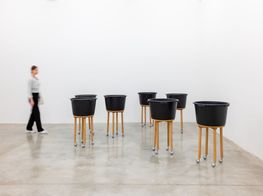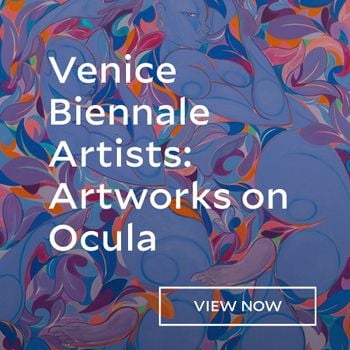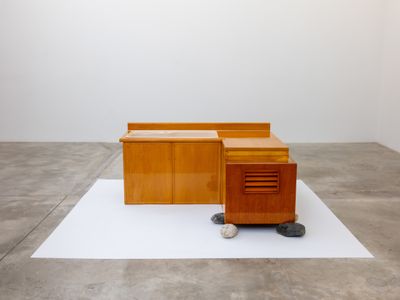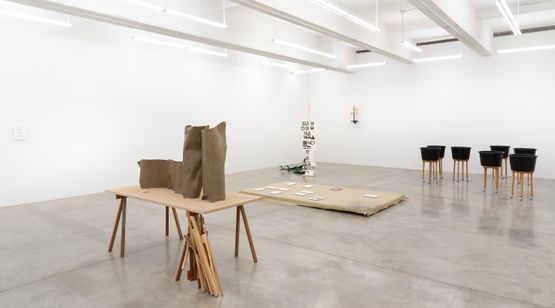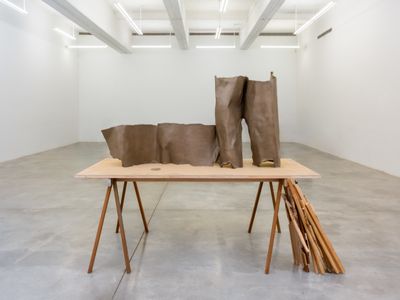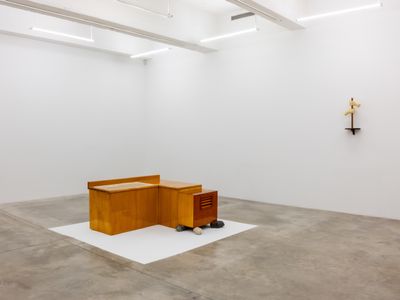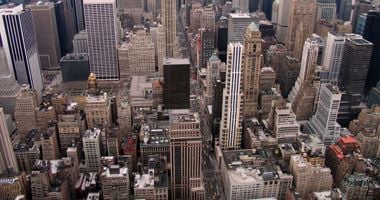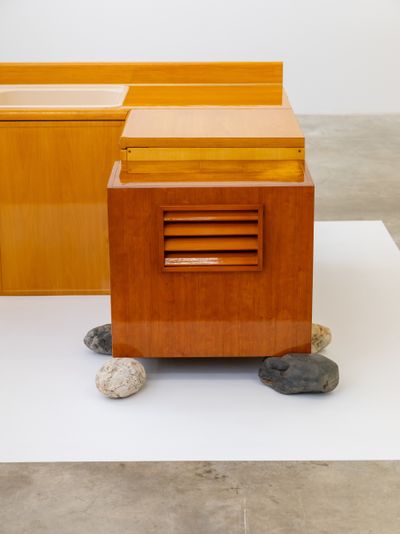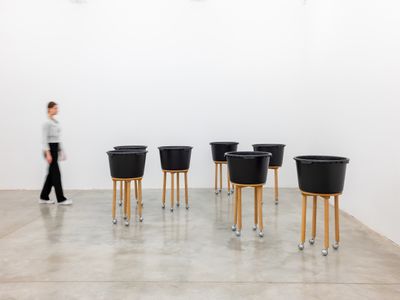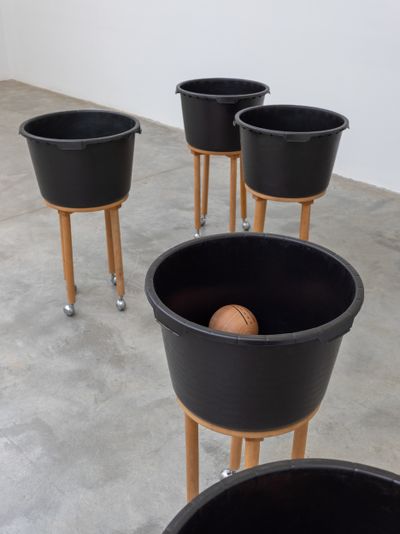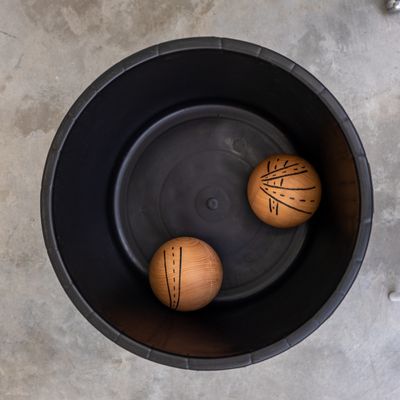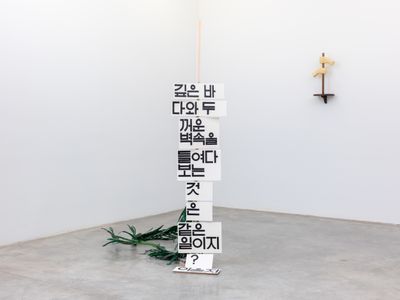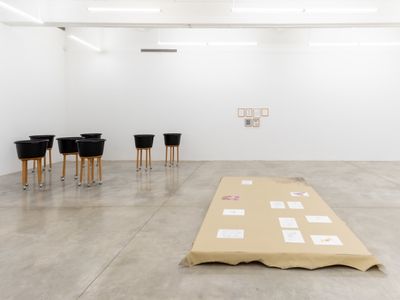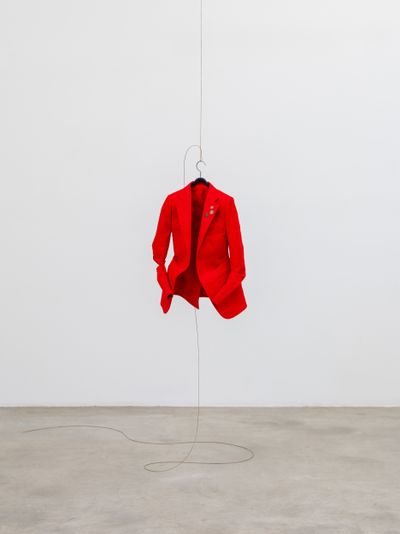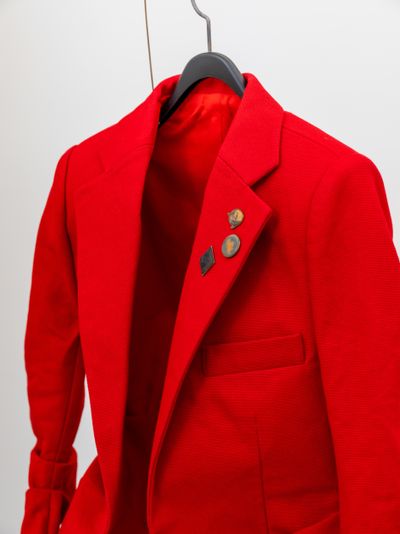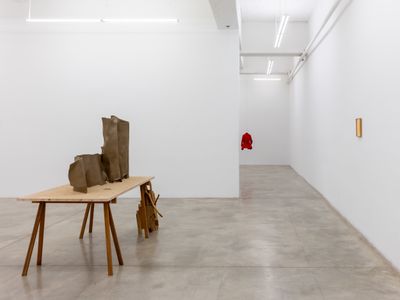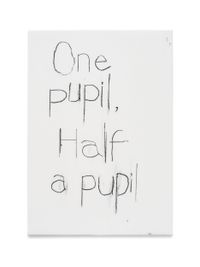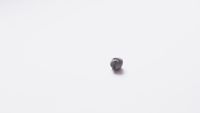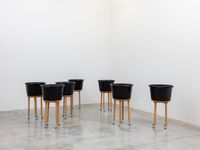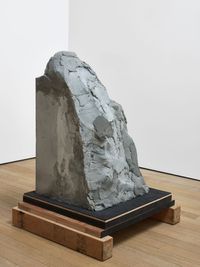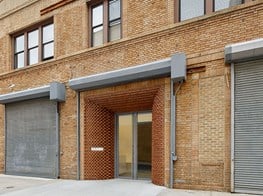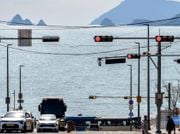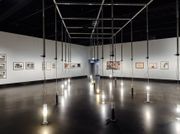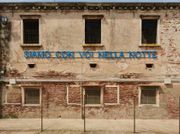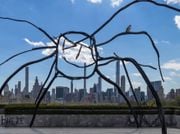Chung Seoyoung on the Density of Objects
SPONSORED | TINA KIM GALLERY
Chung Seoyoung. Courtesy the artist and Tina Kim Gallery. Photo: Charles Roussel.
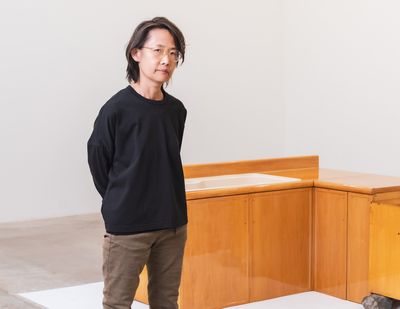
Chung Seoyoung. Courtesy the artist and Tina Kim Gallery. Photo: Charles Roussel.
In the mid-1990s, Chung Seoyoung gained recognition in Korea for her use of unorthodox materials, employing commonplace and industrial objects to create her sculptural installations.
Chung stresses minimal intervention, altering objects into new forms that produce different relations with one another. Road (1993), for example, consists of seven plastic buckets on wheeled stools. Each bucket holds wooden balls with intersecting roads drawn on them—a makeshift map that changes with the tiniest movement.
For Sink (2011), a functional sink was removed from a defunct model house and reconfigured without its faucet and handles, presented at a lower-than-average height, with one end propped up with stones. The incongruity of combining natural and artificial materials is paralleled in the bronze-cast pants in Trousers Peel (2024), unravelled on a plywood table with one heavily loaded leg.
The lack of concrete meaning in Chung's sculptures resounds in the title of her latest solo exhibition at Tina Kim Gallery in New York. With no Head nor Tail (21 March–20 April 2024) invokes a similar absence of direction: as the artist explains in this conversation, despite the number of references she can bring into the artwork, 'in the end, I don't think that really matters.'
With no Head nor Tail follows from What I Saw Today—Chung's 2022 retrospective exhibition at Seoul Museum of Art, which also featured her key works from the early 1990s to the present. In both exhibitions, time is displaced twice: once when Chung created them, decontextualising their original materials, and within the exhibition space, where they are presented in a non-chronological order.
In this transcribed conversation with Lauren Cornell, Chief Curator at Hessel Museum of Art at CCS Bard in New York, Chung discusses the density of objects and the nuanced role of language in her practice, which she treats as a medium to create different realities.
LCI would like to discuss the work Sink (2011). It is the very first piece that you encounter when you come into the gallery; it's a sculpture in the centre of the front room. It is a significant work of yours that was included in What I Saw Today, your retrospective exhibition at the Seoul Museum of Art (SeMA) in 2022, and was first shown in an exhibition called Apple vs. Banana in 2011, which was held in a defunct model home in Seoul. Can you discuss how Sink came to be?
CSYWhen I first started came across the model house, I conceived it as one big piece of art. It was constructed in an effort to build apartments in Korea, which were a sign of wealth in the 1990s, particularly in Apgujeong District in Gangnam, south of the Han River of Seoul. It hadn't been used for 10 years or so, and I opened its doors for the first time since then for that exhibition.
And when I opened the model house, I realised that there were a lot of these objects inside that were supposed to be functional for human existence. But time had stopped, everything had stopped when I opened the doors of this house. That meant I could do anything with it. So I thought that I could create something based on what was going on in that particular apartment, both in terms of its environmental conditions and the objects within it.
I took off the sink from the wall and reorganised the objects that were surrounding it to support it. And when I began the process, I realised that it would read as a sink, but at the same time that it would not be a real sink per se, because I'd taken it out of the context of the model house.
Really, the question was: 'how much can I change the sink?' And for me, what was important was to transform it in the most exact way with minimal intervention. I could have transformed it in a quite drastic way, and it could address, for instance, the history of the sink and how it came to be situated within the domestic environment. But for me, the focal point was to intervene into the object as minimally as possible, and then bring it to be viewed in a different context. I wanted to discover the characteristics of the sink that were implied within the object, but change one or two of its characteristics and bring it to a completely different point. And that's really what I consider to be a central point in my practice.
Sink is an interesting object because it arrived after a very long process of what I refer to as 'negotiation'. There was also the additional element of distance where I brought it to New York for this exhibition after such a long time. The amount of distance and time that the sink had travelled is something that I cannot really explain myself. In a way, different people can come up with various meanings behind such a gap in time and distance so that they understand the course of its existence.
The title of the exhibition, Apple vs. Banana, encapsulates the moment before and after my career. 'Apple versus Banana' could have been 'Apple and Banana' or 'Apple comma Banana', but the moment I inserted 'versus' in that title, apple and banana started having a different relationship. And that kind of conflictual relationship that I'd formed between the apple and the banana interested me, as it created an active state in which I could mobilise a lot of different possibilities.
LCYour exhibition at Tina Kim Gallery, like your retrospective What I Saw Today, wasn't laid out chronologically, which to me is significant because it blurs the time periods and eras in which the works were made. In a way, they feel 'out of time.' And yet, because the materials have these specific references, they are still charged with history and place.
This non-chronological installation dramatises a way that your work has been described, which is that it speaks to collective memory and in particular, the collective memory of Korea. But this memory also isn't fixed, as it's always evolving and because everyone comes to it differently. Can you speak about the notion of collective memory through Road (1993)?
CSYLet me start with the title of the exhibition. In 'With no Head nor Tail', it is assumed that the tail was there, but it's not there anymore. So even from the starting point of this title, I am trying to make myself different or make myself into an entity that I completely do not know. As always, the title of an exhibition or a work is a condensation of many different ideas of working as an artist. As an artist, you can bring in a lot of references to prove why a particular work is important. But then, in the end, I don't think that really matters. Everyone may think that something is very important, but maybe none of what everyone thinks is very important. This idea of leaving somewhere empty-handed or being empty-handed perhaps touches at the most fundamental aspects of art, as you don't make art for any guarantee of success.
I'm interested in that idea of 'no head, nor tail' because without a head, you're dead. The idea of no head is assuming this state of urgency. And thinking about the state of urgency was important because when I was putting together the show, it wasn't necessarily a retrospective per se, but it was a show that tries to condense a rather long period within my practice. And somehow in the title, I'm worrying about this tail that never even existed.
Let's return to Road. The idea of Road doesn't come from the idea of memory that is very broad, or from the kind of memory that has a very specific reference to art or literature. For me, what's interesting is this idea that we all share a certain memory and that individual objects can have individual memories. The fact that there's a shared memory—or, as you called it 'collective' memory—is very interesting. For me, this question started to form when I came across a journal article of sorts about the human brain. The main idea of the article was that when you see something three-dimensional, there is a process of inputting that information into the brain that treats the object as if it were a flat, two-dimensional thing. Then the brain goes through the process of transforming this information into a three-dimensional object. That was quite interesting to me.
And this was a piece of information that resonated with something else that I had thought before: when I was driving on the highway for a long period of time, like six, seven hours, I realised that actually what I was seeing was just a very simple view in front of me, this road with a yellow line in the middle. Even if I travelled through this immeasurable distance that required me to drive for six, seven hours, what I, in the end, had was this two-dimensional image of this road, this line in front.
While I was thinking about this very broad range of time and space, I came across this idea of the container as a signifier of collective memory. When I made Road in Germany in 1993, they were using this plastic container to mix cement, so I was thinking about how that object in and of itself could be a container of collective memory of that particular moment in time. And I wanted it to portray it in a very light-hearted and humorous way, because the container and the object inside can roll around with the wheels connected below. For me, this is an indication of how unstable the object, let alone the overall installation, can be, and how we can think about collective memory in a similarly 'unstable' fashion.
LCThe open-ended aspects of your work and its humour make me think of how so many pieces in this exhibition deal with language. You have quite a few glazed ceramics on the platform in the second room. Some of them have figures like Who? (2023) or Bear? (2023) and some of them use phrases and questions that are nonsensical, provocative, open—they stretch your mind. One of them in Korean says, 'in the deep past we wandered without a home and didn't work so much.' And one of them in English says, 'nature has no goals right?' How does language operate in your work as a kind of material?
CSYIt is somewhat paradoxical for me to think about language. Language is interesting to me, because it is a tool that everyone uses, just like the everyday objects that I use in my sculptures. Changing something small about a particular object transforms it into a completely different entity, and the fact that I can change language and its location ever so slightly is a very good indication of how I can use it as a tool—just like how I brought the sink and changed its minute specificities to bring it into a different reality. As such, I am using or transforming languages with the same sentiment or attitude that I have towards sculptures to bring them into a new reality. I'm curious about how language can make us understand or doubt or even surprised. And that's why, as I said earlier, how I use language may seem paradoxical, because it is a way for me to face reality in a completely different way.
Let me share a realisation that I had this morning, which was about why I work in the way I do. There was a show that I did in 1998 with a few friends, which I hadn't thought of for a long time, that just came to my mind. It was titled Feed+Back. What interested me and my friends was this notion of the back. The back is a part of our body, completely attached to the frontal half, but you only can see it through a mediating object; you can never see it yourself. And the fact that I'm only able to see through a mediated form creates a rather mysterious conflictual relationship between what we can understand and perceive immediately and what we cannot. And I think that's how I started using 'versus' as a way to think about relationships. That's also a point at which I started thinking about a way of finding reality that I mentioned earlier.
LCYou studied sculpture in Seoul National University in the 1980s. Then you moved to Stuttgart and you were there from 1989 to 1996. You returned to Korea in 1996, which, as we know, was the time that the country was undergoing a financial crisis that led to a major national reckoning and precipitated social change. This was a tumultuous time to return. How did studying abroad and returning at that moment influence your practice, which also rose to such prominence at that time?
CSYWhen I look back at that moment, I think, 'something invaded my retina.' When I returned to Korea at the end of the 90s, it felt like everything in Korea had just literally invaded my senses.
Because it was obviously a society that was very much in flux, there were a lot of forces that tried to control what it was going through. But there were a lot of things that were falling apart as well—the system was quite literally out of control. These things came across very vividly. The scenes in which certain objects were getting out or falling out of the system were particularly interesting to me.
What was important was to not analyse nor research the phenomena of this society or try to understand in logical terms how this society came to be, but to help others see directly what I was seeing. And I think this is a point that also harkens back to the title of the SeMA retrospective, What I Saw Today. The central question for me was about going through minimal intervention and allowing people to see the problem itself—finding the exact point at which I allowed others to see what I was seeing.
Much of my thinking revolves around my intuition. Intuition is not something that can be acquired very suddenly or out of nowhere. It really requires layers of accumulated thinking.
LCFollowing up on that point of intuition, Sung Hwan Kim, in an interview with you included in the SeMA catalogue, asked you about your thoughts on what he called the 'schizophrenic state' of Korean society and art in the 1990s, and on how Korean contemporary art was historicised from a global perspective. I run a graduate programme and we think a lot about how periods are historicised, and how we can examine and unravel those processes. I thought your answer to Sung Hwan was really revealing, and I'm going to excerpt it:
'Isn't the so-called schizophrenic state of South Korean society a cycle of this: life is bound and dragged around by events only to eventually disappear into oblivion, and a piece of that life reappears in an unexpected form at an unexpected place, either assaulting someone or left not even noticed?'
I pulled out that quote because I think that your sculpture could also be described in those terms as 'a piece of that life reappearing in an unexpected form.' Your sculptures aren't making a direct address to current events, but they are encoding specific times and lives in them.
I thought we could bring this up to the present and talk about how this operates in one of the new works that's in this show. Could you speak a bit about Red (2024) and what this 'encodes'?
CSYTo think about this recent work, it's important for me to think about the SeMA retrospective and the problems and questions I was dealing with at that moment. At the time, I was thinking a lot about everyday objects and sculptures that I had worked with for a long time, but it was quite difficult for me to think about them in the same way. I concluded that this was because objects and sculptures have a certain density, and I felt that density was really thinning out and getting lost.
I was preparing for the SeMA retrospective during the summer as it opened in September. I had seen all these cicadas around Korea as they become active in the summer and saw that they had shed and just left their shells on the trees. I was coming to recognise that the way in which the density of objects thinned out was actually very similar to how the cicadas shed and left their shells. That was a moment that really hit me in terms of how I was thinking about the status of objects today.
So I wanted to approach this question as a sculptor. The answer was that I should 'make' objects rather than 'rely' on them. In other words, I had to 'make' something, rather than 'change' pre-existing objects. And this is why I made Red, which is on view here. It is an object that I made, but it is not a real jacket per se. It's just like when you have bad eyesight and your images don't line up properly. It's a jacket that is a bit 'off', to put it casually.
There's a direct motivation behind this work. It can be dated back to 2017, when I came to New York for my solo exhibition titled Ability vs. Invisibility here at Tina Kim Gallery. I went to see the Charlotte Brontë show at the Morgan Library, and there were a lot of postcards and drawings that she made, as well as various items of clothing. And this moment of seeing her clothes right in front of me was quite interesting, because they were not shown in a vitrine. They weren't protected in any way and were quite literally sitting in front of me. And this moment was quite confusing, because I was seeing a life-size body of a human being that is so tiny and humble, which I'd never encountered before.
I felt that when I saw that clothing, there was a bit of a space between the dress and myself that wasn't quite estimable or definable. I think this is similar to the ways in which we think about the sensations or experiences that have passed. I held that experience in me when I was looking at Charlotte Brontë's dress, and then when I came back to the studio later on, I decided to focus on that moment to address the questions of the present. —[O]

